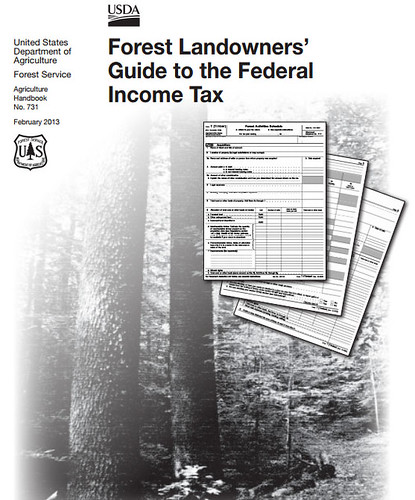The updated Forest Landowners’ Guide to the Federal Income Tax is now available online and includes updated information on Federal income tax as it pertains to timber and forest land planning.
“The main purpose of this guide is to foster good management of family-owned forest land by providing an explanation of provisions and incentives related to forest ownership and management under Federal income tax law,” says Emeritus Research Forester John Greene. Greene authored the guide and is a volunteer for the Forest Service Southern Research Station Forest Economics and Policy unit now that he is retired.
The guide, co-authored by William Siegel, William Hoover and Mark Koontz, updates and takes the place of a previous publication of the same name, incorporating new tax laws and changes through Sept. 30, 2012. It introduces tax planning and basic tax considerations and explains the Federal income tax as it pertains to timber and forest land. Included in the guide:
- Basis and capital accounts,
- Reforestation tax incentives,
- Depreciation and the Internal Revenue Code section 179 deductions,
- Operating expenses and carrying charges,
- The passive loss rules,
- Sale or disposal of timber, and
- Government cost-sharing programs.

Forest Landowners’ Guide to the Federal Income Tax includes updated information on income tax as it pertains to timber and forest land planning.
The guide also covers the tax implications of other forest-related topics, including:
- Donation or sale of a conservation easement,
- Installment sales,
- The alternative minimum tax,
- Self-employment taxes,
- Christmas tree production, and
- Non-timber products.
In addition, the authors discuss forms of forest land ownership, how to research tax questions, sources of tax assistance, and forest recordkeeping. The guide includes a glossary of terms, summaries of selected Internal Revenue Service rulings, and a copy of IRS Form T (Timber): Forest Activities Schedule, with instructions and annotations.
